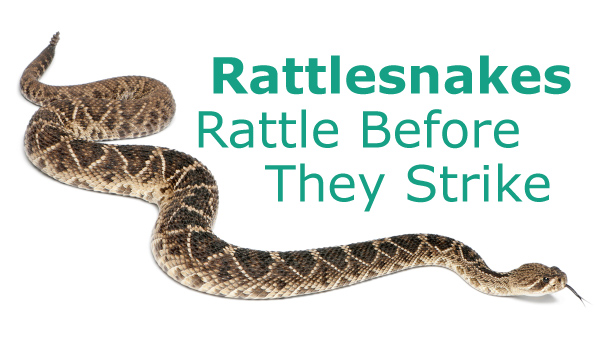Do rattlesnakes always rattle as a warning before they strike?
There are 36 species of rattlesnakes, all native to the Americas, ranging from one to eight feet in length. The most easily identifiable characteristic of a rattlesnake is of course, the “rattle” found at the end of its tail.
The rattle is basically made of dead skin – the snake gains one “segment” every time they shed their skin. You cannot tell a rattlesnake’s age by counting the number of segments in their rattle, as some believe, since the amount of time between skin-sheddings varies and is often less than a year. Also, parts of the rattle may break off as the snake travels over rocky terrain.
It is believed that a rattlesnake’s rattle evolved to warn predators. When the snake senses vibrations from an animal nearby, it contracts the muscles in its tail to create the sound. This helps both the snake (doesn’t get stepped on) and the predator (doesn’t get bitten).
So, the purpose of the rattle is to warn that the snake is nearby, not to warn that it is about to strike. A human being, especially a child, may not weigh enough to allow the snake to sense the vibrations of approaching footsteps (rattlesnakes cannot hear). Therefore, it may strike with no warning if startled. As mentioned above, the rattlesnake may not even have a rattle as it could have broken off; also, young rattlesnakes, whose venom is just as dangerous as adults, may have not yet developed a rattle.
Bonus Fact: The rattlesnake’s tail muscles can fire 50 times per second, for up to three hours!




